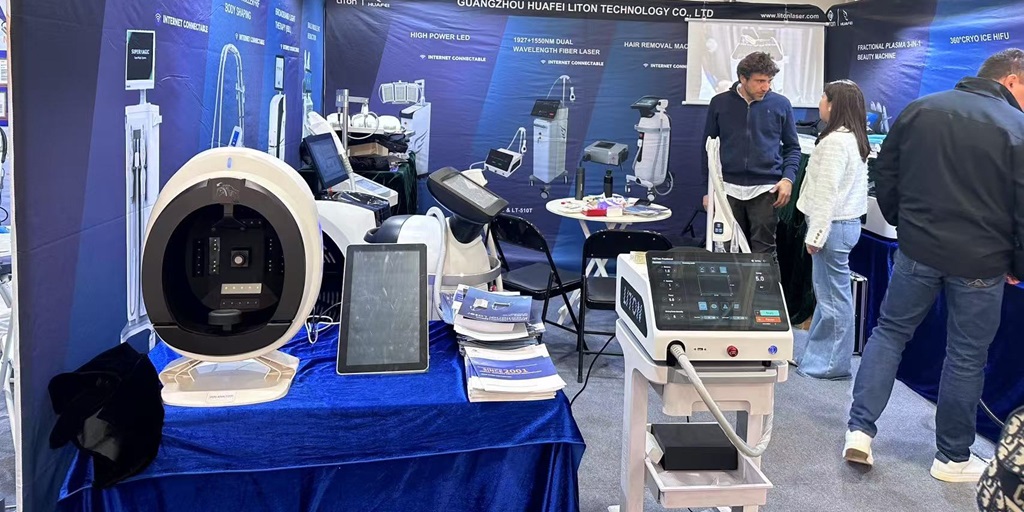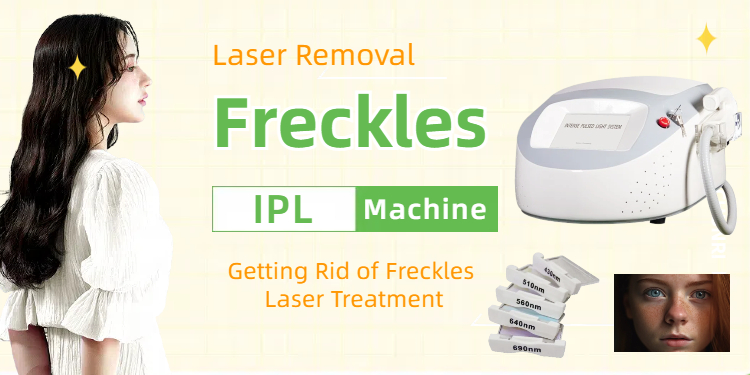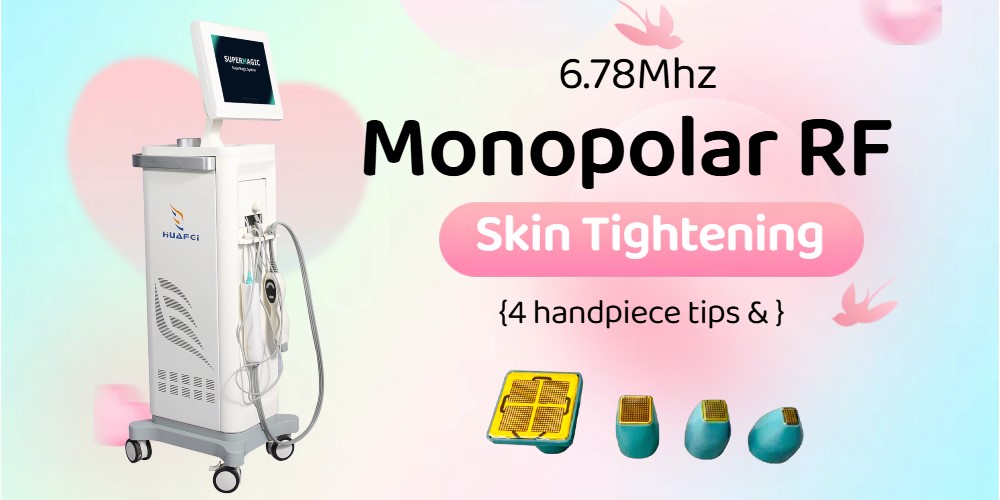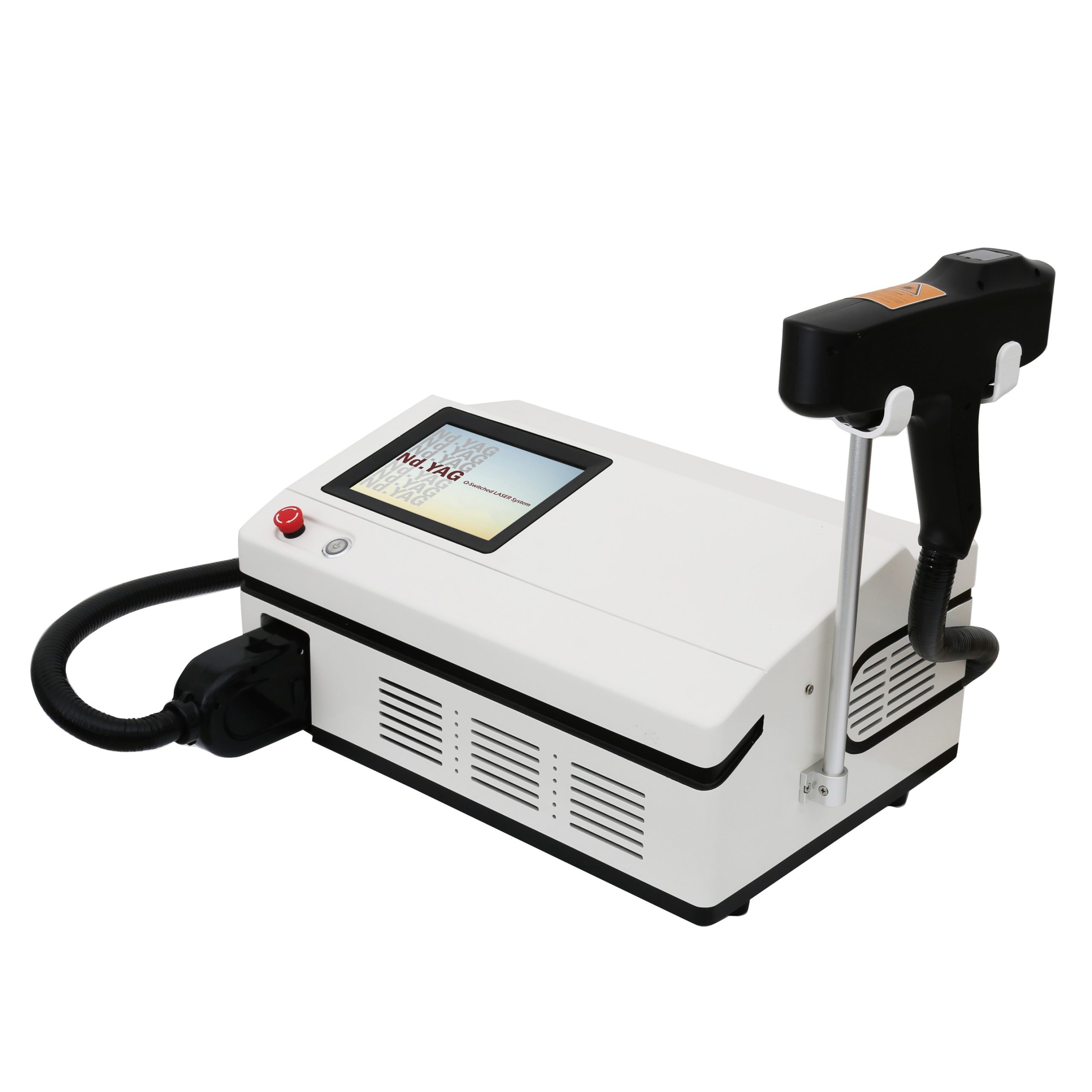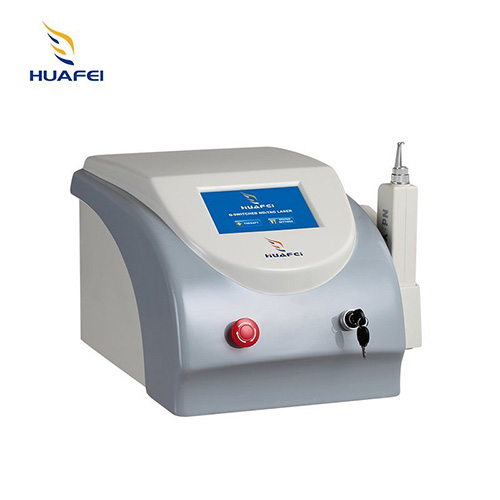Melasma is recognized as the “king of spots”, and its treatment methods are varied. Among them, pigmentary lasers mainly include Q-switched lasers and picosecond lasers. Due to the high market popularity of picosecond lasers, Q-switched lasers seem to have become outdated laser equipment.
So, in clinical practice, should picosecond lasers be used to treat melasma? What are the advantages of Q-switched lasers in treating melasma? How to choose the right wavelength?
What is the best laser treatment for melasma? Let’s discuss it together~
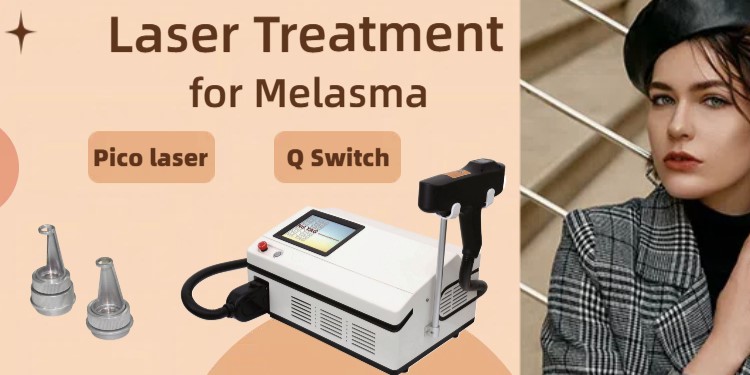
Generation of chloasma.
Chloasma, also known as liver spots, butterfly spots, and pregnancy spots, is a light brown spot with unclear boundaries and irregular shapes that appears on the face with the cheekbones as the center.
Generally, it is symmetrical and butterfly-shaped and distributed on the cheeks. Although it is generally female, there are also cases of male patients.
The exact cause of chloasma has not been determined so far. It is generally believed to be closely related to genetics, ultraviolet rays, and endocrine factors. However, it may also be related to factors such as cosmetics, photosensitive drugs, food, diseases, and mental stress. Even habitually rubbing your face hard when washing your face may be the cause of the aggravation of chloasma.
Moreover, melasma often appears in combination with other spots, which can be regarded as a very difficult problem among facial spots.
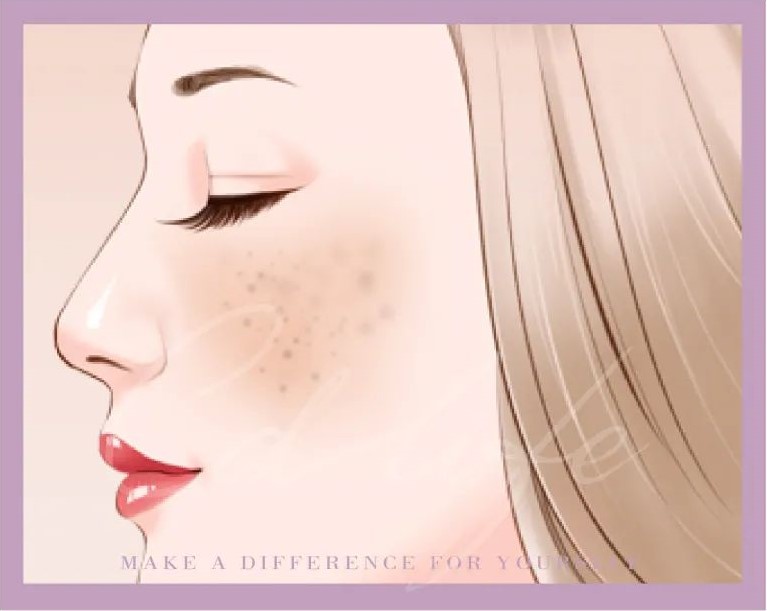
Treatment ideas for melasma.
The essence of melasma is chronic over-irritation inflammation caused by damage to the facial skin barrier, which leads to inflammatory pigmentation.
Since it is a skin inflammation, the development process of melasma can be classified into four stages: prevention stage, inflammation stage, stability stage, and repair stage. Different countermeasures need to be adopted in different development stages.
Prevention stage.
This stage is mainly for children with a family history of melasma. Regular skin testing and early prevention work (cleaning, moisturizing and sun protection trilogy) must be done.
Because prevention is often easier than treatment.
Inflammatory stage.
Avoid laser treatment and chemical peeling, and choose basic treatment combined with systemic drug treatment.
Topical drugs such as hydroquinone, retinoic acid, azelaic acid and arbutin, etc. Oral drugs are mainly tranexamic acid. But it must be used according to the doctor’s advice.
Stability & repair period.
Medical beauty methods can be combined with systemic and topical drug treatments, such as photoelectric and products.
Intense pulsed light and laser are the main photoelectric projects used to treat melasma. However, according to the consensus of Chinese experts on the diagnosis and treatment of melasma (2021 edition), single and repeated photoelectric treatments are prone to pigmentation, hypopigmentation/loss, and recurrence. Therefore, photoelectric treatment is not recommended as a long-term clinical maintenance method. The number of consecutive photoelectric treatments should not exceed 15 times, and repeated treatments can be considered after an interval of 1 year.
The parameter settings of laser treatment require mild intensity, the initial energy should not be too high, the treatment interval should not be too short, and the treatment endpoint reaction is mild erythema (in plain words, it is good to be red, and don’t use too much force to avoid irritation and cause bad results).
Advantages of pico laser treatment for melasma.
Picosecond refers to the “pulse width” of laser emission, that is, the duration of the pulse. The pulse width of Q-switched (Q-switched) laser is at the “nanosecond” level. Both types of lasers belong to “pigmentary lasers” that are mainly used for pigment treatment. We know that cosmetic lasers mainly exert their therapeutic effects through the principle of “selective photothermal effect”. But in fact, lasers can also exert “photomechanical (photoacoustic) effects”, “photochemical effects” and “photobiomodulatory effects” on skin tissue.
For pigmentary lasers, when they act on the skin, they can exert both “photothermal effects” and “photoacoustic effects”. Generally speaking, for nanosecond-level Q-switching, photothermal effects > photoacoustic effects. For picosecond lasers, the opposite is true, with photoacoustic effects > photothermal effects. Millisecond-level lasers or intense pulsed light have no photomechanical effects.
In theory, the vibration waves formed by the laser energy of picosecond lasers transmitted to pigment particles in a short time can shatter the particles into smaller pieces, reducing thermal damage to surrounding tissues. This advantage is mainly reflected in the use of short wavelengths (such as 532nm) to blast epidermal spots or tattoos. So, does picosecond laser also have more advantages in treating melasma?
The answer is no!
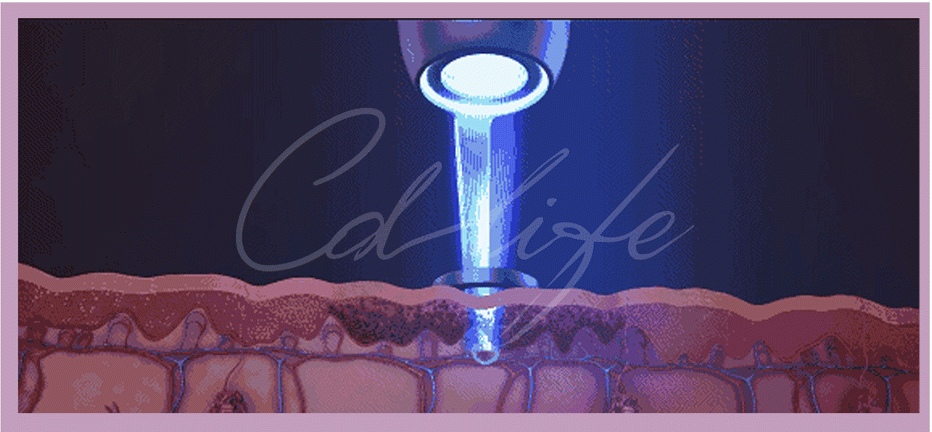
Q-switched laser treatment of chloasma.
At present, the international community still recommends “large spot, low energy, long wavelength Q-switched laser” as the first choice pigment laser for the treatment of chloasma. (Dr. Cong’s note: Note that it is the first choice pigment laser, not the first choice laser. In fact, based on the new understanding of the pathogenesis of chloasma, more and more experts believe that pigment laser should not be the first choice for the treatment of chloasma) “Large spot, low energy, long wavelength Q-switched laser”, also known as “skin-clearing laser” or “skin-clearing mode”. The use of this mode to treat chloasma is mainly based on the “subcellular selective photothermal effect” proposed by Korean scholars around 2010.
“Subcellular selective photothermal effect” refers to a 1064nm Q-switched laser with a large spot and low energy mode (<3J/cm2). The selective photothermal effect of the laser can be concentrated on the dendrites of melanocytes, which can destroy the melanosomes and melanin granules in melanocytes and keratinocytes while maintaining the integrity of the cell nucleus and cell membrane, thereby avoiding melanocyte damage.
We know that melanocytes of chloasma are in an active state and are easily irritated, which can lead to aggravation of the spots and re-blackening. If medium or high energy or wavelengths that are better absorbed by melanin (such as 532nm) are used, it will produce an overly strong “photothermal effect”. At this time, the probability of irritating melanocytes and causing the spots to worsen is almost 100%. Since the “subcellular selective photothermal effect” was proposed, the 1064nm Q-switched laser with a large spot and low energy mode (<3J/cm2) has become the preferred laser (mode) for the treatment of chloasma.
The key to laser treatment of melasma.
The 1064nm wavelength is preferred.
Since the melanin absorption rate of 1064 nm is lower than that of short wavelength (532nm, 755nm), it can avoid excessive heat from stimulating melanocytes after melanin absorbs light. In addition, since most melasmas are “mixed melasmas” with pigmentation deposited in the dermis. The 1064nm wavelength penetrates deeper than the shorter wavelength, and theoretically has a better effect on melanin deposited in the deep dermis.
Large spot.
Refers to a 6-10 mm spot. We know that the larger the spot, the deeper the penetration. This is also conducive to removing melanin in the deep dermis. In addition, some laser devices (such as picosure honeycomb picosecond) adjust the energy by adjusting the spot size. The larger the spot, the lower the energy.
Low energy.
Refers to an energy density of <3J/cm2. Of course, the specific energy needs to be judged based on the endpoint reaction. However, there is no uniform standard for endpoint reaction. This large-spot, low-energy skin-cleansing laser mode has been used in clinical practice for more than ten years. The results showed that although it has a relatively good effect on the disappearance of melasma, the proportion of pigmentation exceeds 60%. The previous endpoint reaction was a slight erythema around the spots. However, to achieve this endpoint reaction, it is usually necessary to repeatedly scan multiple times, and the number of spots is usually 1500-2000. In fact, it is this excessive scanning that causes energy accumulation, leading to pigmentation, and there are even reports of a small amount of hypopigmentation.
Specific treatment methods.
At present, some scholars have proposed new operation methods for your reference.
- It is recommended to scan only once to avoid repeated scanning.
- The number of spots is ≤1000.
- End point reaction: delayed erythema. That is, no obvious erythema can be seen immediately after laser surgery.
But this endpoint reaction is difficult to grasp. Personally, it is recommended that no obvious erythema appear after one operation, especially for those with dark skin.
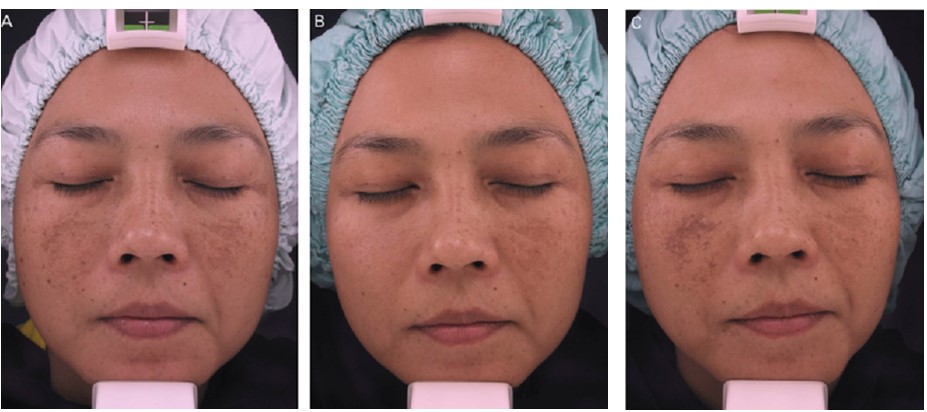
Can picosecond laser be used to treat chloasma?
At present, in most medical and beauty institutions in China, the preferred equipment for treating various spots is picosecond laser. Picosecond laser has become the representative equipment of pigment laser with upgraded technology. Picosecond laser has also begun to be used to treat chloasma at home and abroad. However, from the experience at home and abroad, it has not been found that picosecond laser is better than Q-switched laser in treating chloasma.
We can see from the following two aspects that although picosecond laser can treat chloasma, it has no advantages.
① Large spot, low energy skin cleansing mode laser is derived from clinical observation of Q-switched laser. And “subcellular selective photothermal effect” is also proposed for Q-switched laser. This “subcellular selective photothermal effect” has not been verified on picosecond laser from the cell research level.
② The picosecond lasers currently used in China are mainly picoway (1064nm, also known as super-picosecond) and picosure (755nm, also known as honeycomb picosecond). Although the pulse width of picosecond laser is shortened, the photothermal effect is theoretically weaker than that of Q-switched laser with the same wavelength. However, the picosecond lasers on the Chinese market generally have high energy. That is to say, when the energy of the picosecond laser is adjusted to the lowest, the energy is still high. This high energy actually has a strong photothermal effect. When we need to use a lower energy density to treat melasma, the adjustable energy range on the Q-switched laser is larger. When using picosecond lasers, for some patients, if erythema reactions occur even at the lowest energy, it is impossible to lower the energy for a gentler treatment.
In terms of pigmented laser treatment of melasma, domestic and foreign academic circles have basically reached a consensus:
Single and repeated phototherapy can easily lead to pigmentation, hypopigmentation/loss, and recurrence, so phototherapy is not recommended as the first choice for the treatment of melasma. It is recommended to try using pigmented laser to treat melasma when other methods are ineffective.
Summary of laser treatment for chloasma.
- The widely used “large spot, low energy 1064 nm” skin-cleaning laser mode is derived from cytological and clinical research on Q-switched lasers and is based on the theory of “subcellular selective photothermal effect”.
- Although picoway ultra-picosecond lasers also have a wavelength of 1064nm and a large spot of more than 6mm, “subcellular selective photothermal effect” has not been verified on picosecond lasers. Moreover, the energy of ultra-picosecond lasers is relatively high, and the photothermal effect is not weaker than that of Q-switched lasers. The energy adjustable range of Q-switched lasers is larger. Therefore, picosecond lasers have no advantage over Q-switched lasers in treating chloasma. Foreign clinical studies have not found that the efficacy of picosecond lasers in treating chloasma is better than that of Q-switched lasers.
- Of course, when there is no Q-switched laser or the patient requires the use of picosecond lasers to treat chloasma, it is not impossible to use picosecond lasers for treatment.
When using picosecond laser to treat chloasma, it is recommended to follow the parameters recommended by foreign experts as mentioned above, such as using the lowest energy, only scanning once, and avoiding obvious erythema reaction.
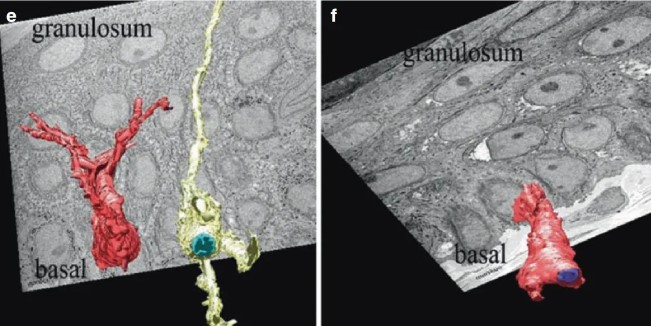
FAQs about laser treatment of melasma.
Q: What is treatment for melasma laser?
A: It means removing melasma through laser treatment, usually using picosecond laser or Q-switched laser.
Q: How much does laser treatment for melasma cost?
A: Melasma treatment generally requires 3 to 5 sessions, and the cost of each session needs to be adjusted according to the local situation, with a minimum treatment cost of $1,000.
Q: What is the best laser treatment for melasma?
A: Considering the safety and practicality of treatment, the mainstream laser treatment for melasma is Q-switched ND YAG laser.
Q: How about laser treatment for melasma before and after?
A: After melasma treatment, melasma can be effectively removed, and as the number of treatments increases, facial melasma will become lighter and lighter.
Q: How effective is pico laser treatment for melasma?
A: Picosecond laser can indeed treat melasma, but it does not have much advantage over Q switch laser. And picosecond laser treatment of melasma is prone to pigmentation later.
Choose the best laser for melasma treatment.
Through this article, we can know that the most popular laser treatment for melasma is to use Q-switched laser. Compared with the high price of picosecond laser, ND YAG laser is a better choice.
Litonlaser is a beauty machine manufacturer with 20 years of experience, mainly producing beauty medical devices and equipment. As early as 2010, we were able to achieve mass production of Q-switched lasers, and they were widely welcomed and concerned in the Southeast Asian market. The quality control is very sure.
And we also have beauty machine training institutions in China. The clinical data and tests in this article are all implemented by our professional teachers. We have also sorted out the clinical application guide of beauty equipment, the parameters of laser treatment of melasma, precautions, etc. We have sorted and summarized them. If you need to purchase Q-switched or picosecond lasers, but also need professional training and guidance, then Litonlaser is your best choice!



